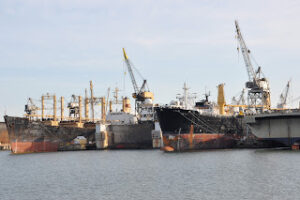
Bayview/Hunters Point 3rd Street Light Rail Kirkwood/Oakdale Station The Marquis Pole Horace Washington was the artist for the third station. His work represents the tradition of shipbuilding and the history of WWII in the neighborhood. At the start of World War II the Navy recognized the need for greatly increased naval shipbuilding and repair facilities in the San Francisco bay area, and in 1940 acquired property on the waterfront and named it Hunters Point Naval Shipyard. The property became one of the major shipyards of the west coast. The first USS Pike (SS-6) was a Plunger-class submarine in the service Continue Reading


